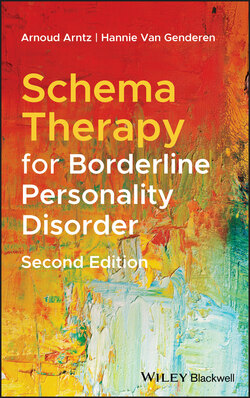Читать книгу Schema Therapy for Borderline Personality Disorder - Hannie van Genderen - Страница 30
The healthy adult
ОглавлениеIt may seem odd to have a “healthy adult” mode when dealing with BPD, but it is exactly this mode that the patient needs to cultivate and eventually let dominate. Due to absence of a normal, healthy childhood, as well as due to uncontrollable events during this period, the healthy adult mode is seldom strongly present during the initial stages of the therapy. Research shows that BPD patients are on average characterized by very weak presence of this mode.
The patient's lack of healthy development in areas such as bonding with others, autonomy, self‐expression, self‐value, misfortune, emotions and emotional needs, and the lack of experience in dealing with realistic limitations, requires the therapist to serve as a representative of the “healthy side” particularly in the beginning of the therapy.
However, it is the healthy adult who initially ensures that the patient seeks out and remains in therapy. At later stages of therapy this mode helps the patient to achieve healthy goals. These therapeutic goals such as relationships with others, looking for educational or work opportunities, and other such activities that the patient will enjoy and be capable of completing, are necessary for successful completion of the therapeutic process. While in this mode the patient not only dares to show her feelings, but also shows she is capable of controlling their expression, a necessary skill for the BPD patient to accomplish (See ST step by step5.23).
As previously stated, in the beginning of the therapy, it is the therapist who serves as a representative of the so‐called healthy side. By the end of the therapy, the healthy adult is so evolved that she can take this role over from the therapist and the therapy can be concluded in a healthy, appropriate manner.
